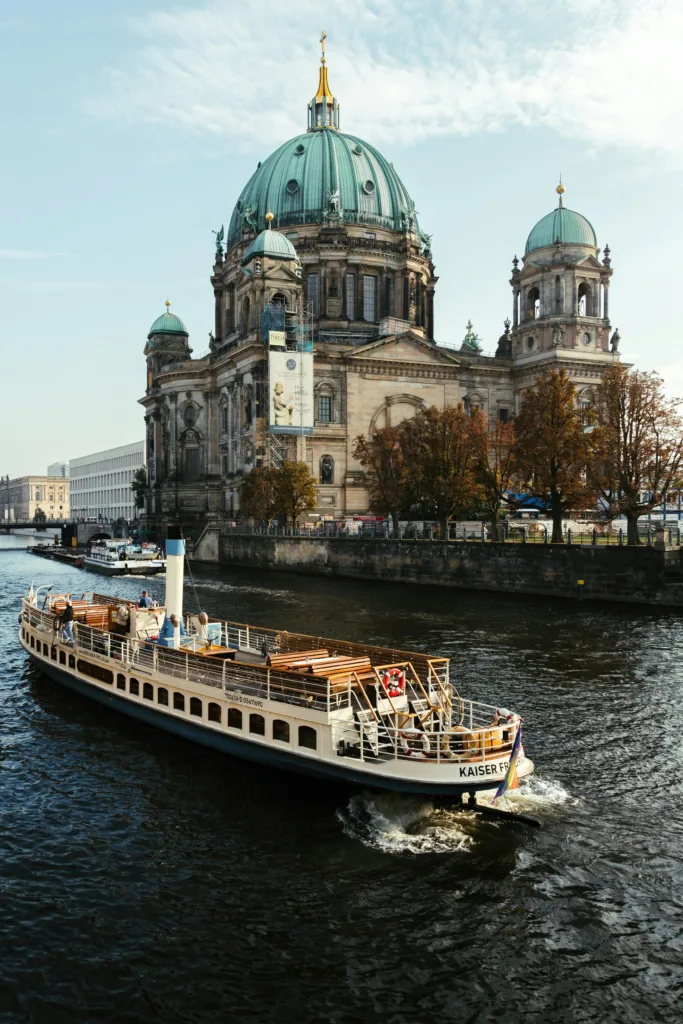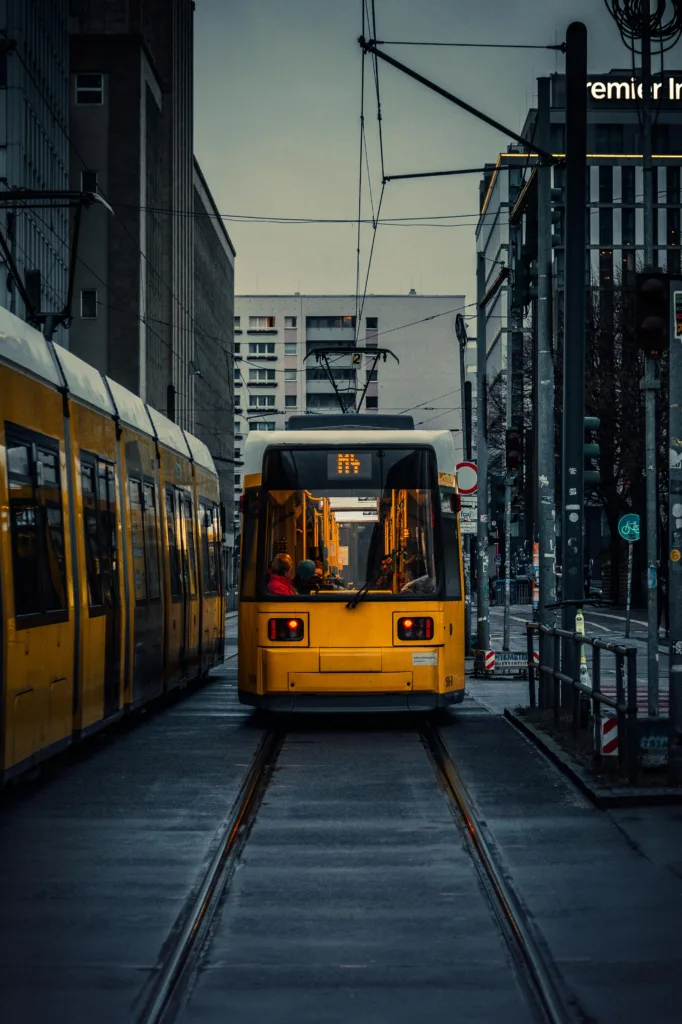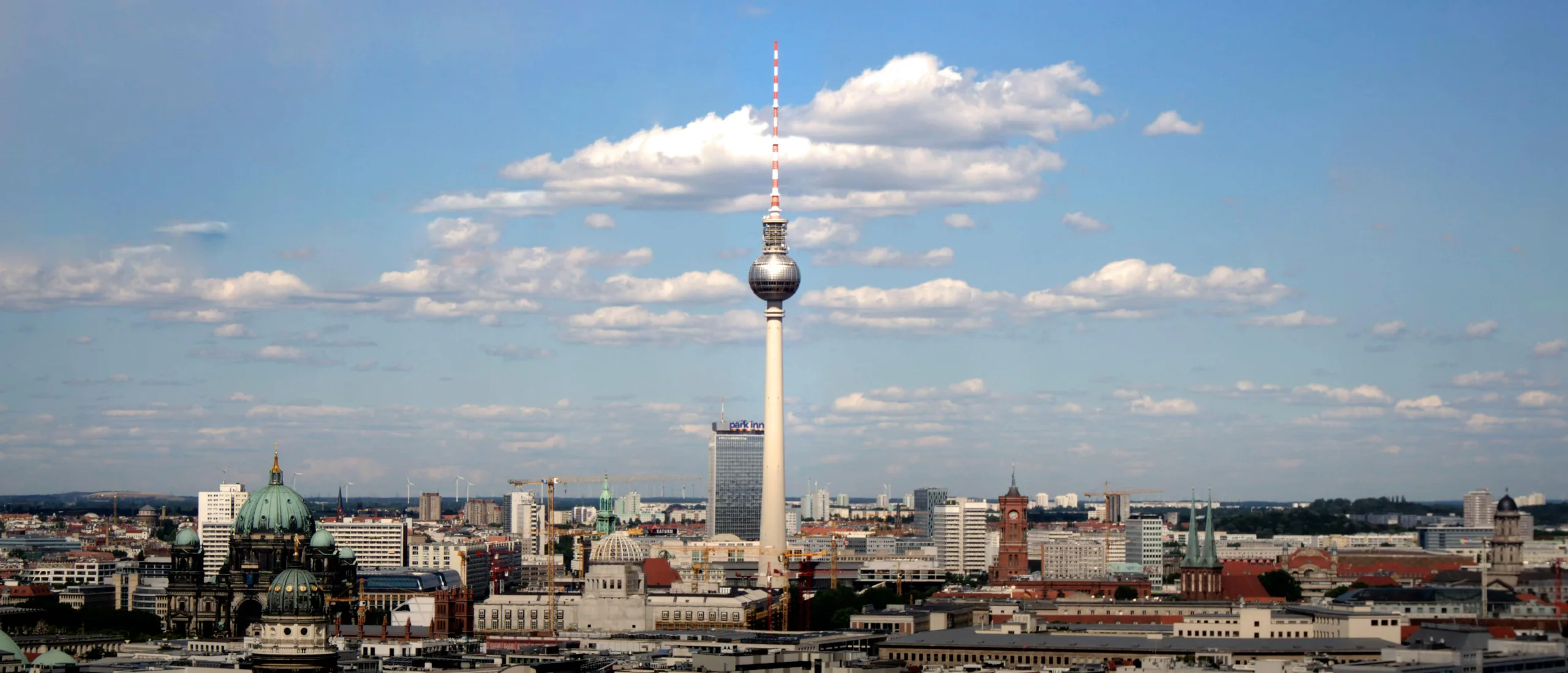Why Should You See Berlin?
Berlin, Germany’s capital, is a city like no other, offering a blend of history, culture, and modern innovation. From the iconic Brandenburg Gate to the vibrant street art of Kreuzberg, Berlin effortlessly caters to both history buffs and modern-day explorers. Whether you’re uncovering its storied past or enjoying its energetic nightlife, Berlin guarantees an unforgettable experience. That’s why you should definitely see Berlin!
Furthermore, going to see Berlin means stepping into a city where every corner has a story. You can explore world-class museums on Museum Island, enjoy the lively local markets, or simply soak in the city’s laid-back vibe. Berlin’s unique mix of tradition and trendiness makes it a must-see destination for anyone who loves travel.
Why now? Berlin is constantly evolving, with new art installations, restaurants, and events to enjoy. The city’s diversity ensures that every visit offers something new to discover. There’s no better time to immerse yourself in the magic of Berlin than now!
4-Day Itinerary to See Berlin
Day 1: Historical Landmarks
Morning: Start your day with a visit to the Brandenburg Gate, a symbol of peace and unity. Nearby, explore the Reichstag Building and its breathtaking glass dome for panoramic city views. Take a leisurely walk through Tiergarten, Berlin’s largest park, for a peaceful moment before lunch.
Afternoon: Dive into Berlin’s WWII history with a visit to the Holocaust Memorial. Then, walk along the Berlin Wall Memorial to understand the impact of the city’s division during the Cold War. End your afternoon by visiting Checkpoint Charlie, a historic crossing point between East and West Berlin.
Night: Wrap up your day with dinner at a traditional German restaurant. Try dishes like schnitzel or currywurst for an authentic Berlin experience. For nightlife, head to Friedrichshain for its cozy beer gardens and lively bars.
Day 2: Culture and Museums
Morning: Spend the morning exploring Museum Island, home to five world-renowned museums. Be sure to visit the Pergamon Museum, famous for its ancient artifacts and architectural marvels. Take a break at a riverside café for coffee and pastries.
Afternoon: Head to the Berlin Cathedral for a mix of history and stunning architecture. Climb to the top of the dome for fantastic views of the city. If time allows, explore the nearby Nikolaiviertel, a charming historic district filled with quaint shops and eateries.

Night: Attend a live performance at the Berliner Philharmonie or catch a play at one of Berlin’s many theaters. Alternatively, enjoy a quiet evening walk along the Spree River to see the city lit up beautifully.
Day 3: Modern Berlin
Morning: Begin your day in Potsdamer Platz, a hub of modern architecture and shopping. Visit the Sony Center, a futuristic complex with unique glass roofing. Nearby, check out the Berlin Spy Museum to uncover tales of espionage during the Cold War.
Afternoon: Explore East Side Gallery, the largest open-air art gallery in the world, featuring murals on a preserved section of the Berlin Wall. Wander through the lively markets in Kreuzberg and grab lunch from one of the many food stalls offering international cuisine.
Night: To really see Berlin you need to discover Berlin’s electric nightlife in neighborhoods like Neukölln or Mitte. Enjoy craft cocktails at rooftop bars or dance the night away in world-famous clubs like Berghain or Sisyphos.
Day 4: Relaxation and Fun in Berlin
Morning: Visit Charlottenburg Palace, a stunning Baroque masterpiece with beautiful gardens. Explore Peacock Island (Pfaueninsel), a UNESCO World Heritage Site with scenic landscapes and roaming peacocks. This is the perfect way to enjoy Berlin’s more serene side.
Afternoon: Stop by the quirky Teufelsberg, an abandoned Cold War spy station covered in graffiti. Then, wander around Hackesche Höfe, a series of interconnected courtyards filled with artisan boutiques and cozy cafés. Don’t forget to pick up souvenirs for your loved ones.
Night: End your trip at Tempelhofer Feld, a former airport turned into a public park. Watch the sunset, enjoy a picnic, or simply relax as Berlin bids you farewell.
The History of Berlin
Berlin’s history is a tale of resilience and transformation, from its founding in the 13th century to its pivotal role in 20th-century world events. The city was the epicenter of key moments like the rise and fall of Nazi Germany and the Cold War. Today, Berlin serves as a reminder of how a city can overcome division and rebuild itself into a thriving cultural hub.

The Berlin Wall, which divided the city for nearly three decades, symbolizes the city’s tumultuous past. Remnants of the wall now stand as a memorial and a canvas for vibrant street art, illustrating Berlin’s ability to embrace change. Walking through Berlin, you’ll find history woven into its architecture, museums, and streets. And if you want to see even more history, make sure to stop by Vienna – the city that everyone truly loves.
Tips for History Buffs: Allocate time to explore the Topography of Terror museum and the Stasi Museum for deeper insights. These sites offer an unfiltered look at Berlin’s journey through oppression and eventual liberation.
Things to Remember When Going to See Berlin
- Travel Documents: Ensure your passport is valid and consider purchasing travel insurance.
- Transportation: Berlin’s public transport is efficient. Get a Berlin WelcomeCard for unlimited travel and discounts on attractions.
- Currency: Berlin operates on Euros, and cash is still preferred in some places.
Top Tips: Always have some Euros on hand for small purchases. Learn a few basic German phrases, though most Berliners speak English.
The Hidden Gems of Berlin
Berlin is a city full of surprises, offering plenty of lesser-known spots to explore. One hidden gem is the Viktoriapark, where you can find a serene waterfall amidst the bustling city. Another is the abandoned Beelitz-Heilstätten hospital, a spooky yet fascinating site for adventurous visitors.
For a quieter experience, check out the Spreepark, an abandoned amusement park turned quirky photo destination. Additionally, the Gardens of the World offers a peaceful escape with themed gardens inspired by countries like Japan and Korea. These spots are perfect for discovering a different side of Berlin.
Tips: Visit these places early in the day for a more tranquil experience. Bring a camera—you’ll want to capture these unique moments.
How to Get Around Berlin
Navigating Berlin is a breeze thanks to its extensive and reliable public transportation system. The U-Bahn (subway), S-Bahn (commuter train), buses, and trams make it easy to reach every corner of the city, from historic landmarks to trendy neighborhoods. For convenience, a Berlin Welcome Card or day pass is a great option, offering unlimited travel and access to discounts on various attractions.

Walking and cycling are also popular ways to explore Berlin, especially in its more pedestrian-friendly areas like Tiergarten or Kreuzberg. Renting a bike lets you take in the city at your own pace, while walking allows you to stumble upon hidden gems and cozy cafes. No matter how you choose to get around, Berlin’s layout makes it accessible and easy to explore.
Things to Avoid in Berlin
While Berlin is welcoming and culturally rich, there are a few things to be mindful of. For instance, steer clear of unlicensed taxis, as they can overcharge unsuspecting visitors—stick to registered cabs or rideshare apps instead. Also, be cautious in crowded areas like train stations or major attractions where pickpockets might operate.
It’s worth noting that jaywalking is frowned upon in Berlin, not just by authorities but also by locals who take traffic laws seriously. Always use designated crossings and wait for the green light, even if the street seems empty. Lastly, respect Berlin’s historical sites and memorials by observing proper etiquette; for example, avoid taking selfies at solemn locations like the Holocaust Memorial.
FAQs About Seeing Berlin
1. How do I get around Berlin?
Use the city’s efficient public transport system, which includes buses, trams, and trains.
2. Is Berlin expensive?
Berlin is relatively affordable compared to other European capitals. Many attractions are budget-friendly or free.
3. What is the best time of year to visit Berlin?
The best time to see Berlin is during spring (April to June) or fall (September to November) when the weather is mild and the city is alive with events. Summer is also popular for outdoor activities, but it can get crowded. Winter offers a magical experience with Christmas markets, but it’s much colder.
4. Do I need to learn German to visit Berlin?
While knowing some basic German phrases is helpful, it’s not necessary as many Berliners speak English, especially in tourist-friendly areas. Signs and menus in popular attractions are often in English, making navigation easier for international visitors.
5. Is Berlin safe for solo travelers?
Yes, Berlin is generally safe for solo travelers, with a vibrant international community and welcoming locals. Stick to well-lit areas at night, avoid overly secluded places, and keep your belongings secure to prevent petty theft. The city’s efficient transportation and friendly atmosphere make it ideal for solo exploration.
Berlin is a city that truly has something for everyone, from history to art, culture, and vibrant nightlife. With this 4-day travel plan, you’ll experience the very best of Berlin while uncovering its hidden treasures. Enjoy your trip, and happy exploring!
— Vick & Ellie





